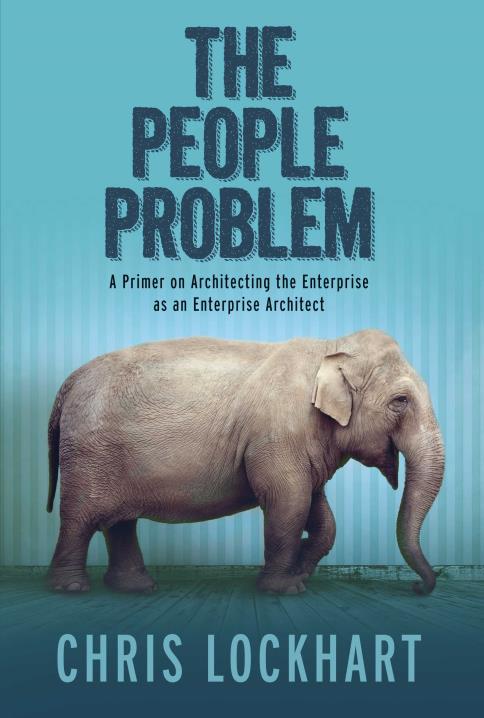IT Should Be Simple
I have worked for technology and management consulting firms since the very early 2000s. We advise folks on how to solve business problems masquerading as technology problems as well as technology problems that threaten to overwhelm IT professionals. This is a plug for that work, but bear with me, the sentiment is central to my view of business, IT and architecture in general.
It’s about simplicity. Technology wasn’t brought into the world to make things harder. It exists to make our lives easier. For a business this is critical.
Let me ask you a question. How does your business view its IT department? I bet this sounds familiar: Unresponsive. Slow. Costly. Complicated. Self-absorbed. Pie-in-the-sky. It’s sort of like having to go to the DMV. Yes you have to do it. Yes there are probably good reasons for all the bureaucracy, but damn is it a costly pain in the ass. Do the words value, efficient, fast, easy to work with come to mind? Probably not. There are reasons for why this is so. But let’s not dwell.
Instead, let’s focus on the positive. What would it take for your business to view IT as a valuable, essential partner instead of an annoying cost-center that they’re forced to deal with? Wouldn’t that be better for you and better for them?
Business is the nucleus of what you do. The revenue stream is paramount. You provide goods and services to your customers for income. That is the business model. It is core. It is the nucleus. It is the collection of positively charged protons, generating a positive revenue stream (hopefully). The technology group is supposed to enable that model. It is a negatively charged constellation of electrons swarming around your business model. It costs money. It consumes revenue. It doesn’t directly generate revenue (typically). But without it you are a heavy metal of protons without balance, destined to draw in whatever electron is floating by. Typically this is what happens to business that attracts junk, bloated corporate IT or worse, point solution technical consulting. These are often present because in an out-of-balance structure they can be. They spend your money because it is in surplus, unbalanced by proper problem solving. If well-functioning IT does not exist in balance and harmony with the business, and vice versa, the entire structure will come undone. Just like an atom.
I believe that technology supports the business by way of three paramount qualities. First is Simplicity. Second is Flexibility. Third is Responsiveness. They flow in that order.
Simplicity doesn’t mean lack of sophistication. Simple things are often the most nuanced. Simplicity demands that a solution to a business problem shouldn’t be complicated with unrelated, unneeded bells and whistles. If you need a solution for ensuring compliance with security-focused regulations or merely to enhance the customer’s trust when it comes time to fork over their credit card number, solve that problem. Don’t go off on a tangent with roles and identity management if access control is the proper solution. Overall, what you offer the business should be understandable. Does it make sense? Does it solve the problem in the simplest way? Frustra fit per plura quod potest fieri per pauciora.
Flexibility doesn’t denote a need to have every conceivable answer to the problem at hand. It is about a solution to the business problem that is designed with the assumption of future motion. That is, solutions that are static are likely to fail in the face of changing business conditions. Does the solution have a built in capability to adapt to change? If not, is the solution “changeable” without further massive investment of time and capital? Does the solution lock you in to certain vendors or certain methods of solving the problem? Does it preclude thinking differently about solving the problem?
Responsiveness is the affirmative answer to the question “Are we solving the problem in the easiest manner with the fewest dollars spent?” Are we able to say, with a straight face, yes business person, we used your money to address your problem in the most efficient manner while maintaining the ability to respond to changes in the business climate? This is the classic value computation. Does a dollar spent return at least a dollar?
Without these three attributes present, the business will indulge in spending on something that won’t return value. The structure will be unstable, your reputation and credibility at risk. Technology solutions with these three qualities cannot exist without the central business core, the nucleus, funding and benefiting from their presence. Likewise the nucleus with its positive charge must have these attributes present in the dollar-consuming orbit of technology. If they aren’t present, the business will attract any and all hangers-on posing as value-delivering technical services. IT’s three critical qualities in perfect harmony with and enabling the core business.
So how do you get there? You can’t solve world hunger, so you begin with that latest IT project you’ve been asked to deliver. Does it have the three critical qualities? Is the solution simple? Is it flexible? Is it responsive to the business need? If you answered no to any of these, you’re in trouble. Intuitively you probably already know this.
The solution approach has been proven time and again. It makes an assumption that the business expects to see value for the money it spends on technology. It focuses on delivering that value by identifying the problem as the business sees it and describing a solution that directly addresses those needs.
We start with a strategy. A high level view of what needs to be done in order for the pain to be mitigated.
We develop a solution architecture to address that pain. It is product agnostic and focuses on the capabilities needed to solve the problem.
We provide a detailed blueprint for how to execute that architecture as an actual implementation using whatever tools you may have in the inventory and identifying gaps where additional tools may need to be acquired.
It’s about making the solution fit the business need. It is about directly addressing the business problem at hand. It is about demonstrating the value of your IT organization in the eyes of the business.
It is about harmony. Money spent on IT should become value delivered by IT. Ideally the value delivered exceeds the money spent. So, okay, the metaphor of the atom isn’t a perfect match. But hey. It’s like an inverse half-life. It’s like a life and a half, or something.
IT made simple is not always a science. It is often a blend of experience, gut instinct and the ability to think through intangible problems by careful analysis taking into consideration human, corporate and political elements. That is how I structure the work that I deliver. That is how I think and how I operate. I surround myself with like-thinking folks.
Maybe it isn’t for you. Perhaps it isn’t your style. Listen, it isn’t for everyone. It’s just for people who want to solve problems and be the rock star of their organization. Let’s strike up a conversation on the twitwebs about it. Should IT be simple, flexible and responsive? Is there something you’re dealing with where this approach might help you? Would that be worth something to you? Yes this is a plug, and that’s okay. Talk to me: @chrisonea


